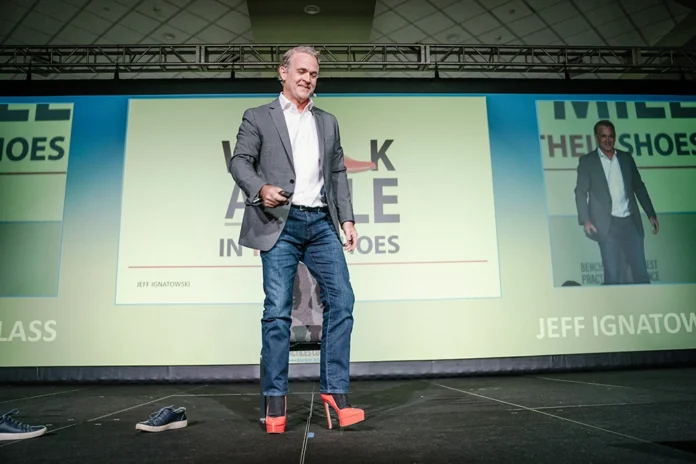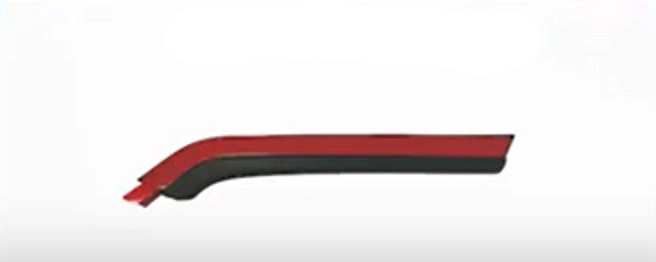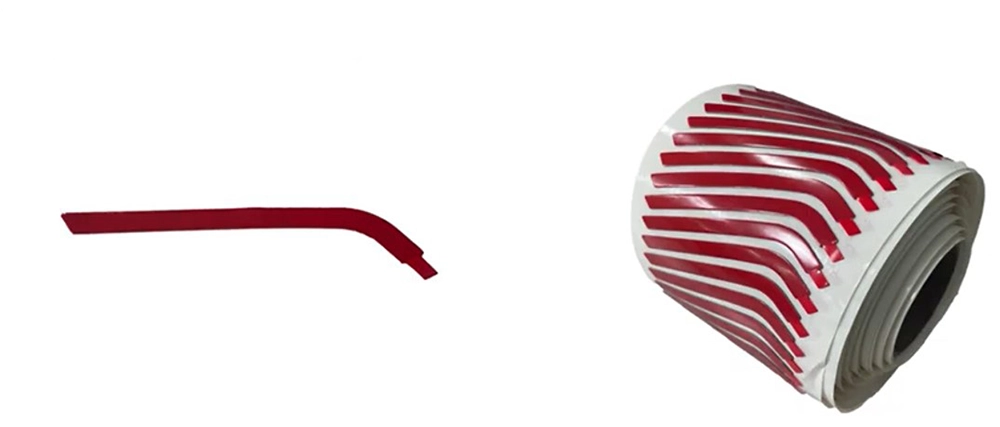
Summarized by Liz Stevens, writer, Plastics Business
Gains in efficiency, quality, throughput and profit can be realized by immersing oneself in the day-to-day activities of one’s team. Jeff Ignatowski, president of Champion Plastics, Auburn Hills, Michigan, walked through a real-world case study during the 2022 MAPP Benchmarking Conference in Indianapolis, sharing steps and best practices to make positive changes on the plant floor and in the corporate culture.
Ignatowski was dressed in business casual as he took the conference stage, wearing an open shirt, sport coat, slacks and loafers. He sat down on a chair and put a paper bag on the ground next to him.
“There is an old saying,” Ignatowski said, “You really can’t understand another person’s experience until you’ve walked a mile in their shoes.” He explained that this means to literally see the world from another person’s perspective. An effective leader needs to be able to understand a different world and needs to manage and make decisions based on the realities in that world after walking a mile in someone else’s shoes.
“I’m here to tell you about some surprising things that have happened at Champion Plastics,” said Ignatowski. “We walked a mile in the shoes of the people on our plant floor, and we found some amazing ways to cut costs, increase efficiencies and improve profitability. And the experience had a profound effect on our corporate culture.”
Ignatowski clicked on the projector with a remote control and displayed his presentation’s title slide, which featured a red, high-heeled women’s shoe.
“From what I understand, if you were to walk a mile in high-heeled shoes, it probably would be the most unpleasant experience ever,” Ignatowski explained. “In fact, I understand that if you were to spend just 15 minutes in high-heeled shoes, it would be a very uncomfortable experience. But for managers and leaders, it’s not about what’s comfortable, it’s about the right thing to do; sometimes you have to put the comfortable aside and deal with the uncomfortable.”
Ignatowski slipped off his loafers, then bent down and pulled a pair of lipstick red pumps with stiletto heels from the paper bag. He struggled to get them on his feet and slightly wobbled as he stood up.
“How many people are walking the manufacturing floors on a regular basis,” asked Ignatowski, as he looked for a show of hands in the audience. “I’m sure you are saying hello and greeting employees, but how many of you are actually walking a mile on that manufacturing floor? And what I mean by that is, are you actually working a press, are you actually assembling parts, are you actually doing inspection, are you helping program robots?” Again, he asked for a show of hands, and fewer audience members raised their hands.
A Case Study: Walking a Mile in Their Shoes
“During wind tunnel testing of its full-size pickup truck, General Motors saw that a spoiler on the back of the cab had a small gap which allowed wind to be sucked into the side of the spoiler,” Ignatowski said. He explained that this was costing GM one mile per gallon in its CAFÉ ratings and that the company came to Champion Plastics for production of a small part to fill that gap in the spoiler. “All that was needed was a simple seal to fill the gap,” he explained, “and GM needed it as soon as possible.”
In fact, GM needed Champion Plastics to be in production in 30 days. “GM authorized us to use 3D-printed parts in production. We needed 16,000 pieces a week, so we found a 3D-printing company that was capable of supplying us with that daily throughput.” The 3D-printed parts were FedExed every day for 30 days for early delivery in the morning, and General Motors hired a courier to pick finished parts from Champion in Auburn Hills, Michigan, and deliver them straight through to Arlington, Texas. “That’s how important this job was for GM,” said Ignatowski. “As a result, we were working seven days a week – including the entire management team and yours truly.”

Ignatowski pressed the projector remote control, and a new slide came up on the screen (Image 1).
He lost his balance slightly while turning to confirm that the right slide had appeared but grabbed the back of the chair to steady himself on the stiletto heels. “Here is the part,” he said, “It doesn’t look like much. It is molded out of a TPV material with a low surface energy and so it requires a piece of adhesive tape to stick it onto the spoiler while it is being assembled to the body. And, by the way, my feet are killing me.”
Ignatowski explained that it may have looked like a simple part for a simple fix, but the project actually was quite labor intensive because the a low surface energy product meant that operators first had to apply a liquid adhesion promoter, or AdProTM, to manually prep the part before the adhesive tape could be applied. “We didn’t realize that this was taking two full-time operators to do the liquid Ad Pro and three to four operators to apply the tape,” said Ignatowski. This, he said, put the company far beyond the amount of labor that had been quoted.
Assembly ergonomics
The Champion management team had no choice. “We had to get onto the manufacturing floor and pitch in,” said Ignatowski. He sat back down, his knees halfway up to his chin with the height of the stiletto heels. “We sat in chairs, which happened to be the chairs that our employees sat in day in and day out, five days a week to assemble parts for us. We sat in those chairs for just one day. When I got home that night, my back was killing me, and my neck was killing me; I could not believe what these poor people were dealing with on a daily basis.” Immediately, Ignatowski logged onto Amazon and bought three of what looked to be the most comfortable chairs he could find. “I had everyone try them out,” he said, “and, within days, we had all new chairs throughout the plant.”
Ignatowski reached down absentmindedly and rubbed the top of one foot. “Now that doesn’t seem like a giant transformation, does it?” he said. “But let me tell you; at Champion Plastics we work hard to celebrate birthdays and anniversaries and to cultivate good relationships with our employees. The gratitude that we received from our employees for those new chairs trumped anything that we had ever done for them. And that’s what started us on our journey to walk a mile in their shoes.”
Surface treatment
Ignatowski stood back up. “After that,” he said, “we looked at the AdPro. It requires full-time ventilation, and everyone should be wearing a mask. It’s sticky, it’s nasty. And we had two full-time operators literally doing nothing but the AdPro application around the clock. I tried it myself, and I got home pretty buzzed from inhaling the AdPro. That was a catalyst for the next idea – we decided to try plasma treating.”
Earlier in his career, Ignatowski had worked for a Class A painter of plastic parts. When the company dealt with low-energy plastics, it would plasma treat the plastic prior to painting. “We did some trials and proved that it would work,” he said. “The next thing we tackled was the tape application.” Ignatowski shuffled a bit, looking down at the red shoes. “My feet really are killing me,” he said. “This is rough.” He clicked the projector remote.
Tape application

“In this photo, on the left is what we, as management, ordered for the parts, as separate pieces of diecut tape,” he explained, as Image 2 appeared on the screen. “But we soon realized what our operators had to do over and over – peel the back off of each of these tiny items before they applied the tape. Because we now were walking a mile in their shoes, we did this step and we saw that it added almost 10 seconds, per unit, just to remove that liner.” Ignatowski quickly invested in a rotary die, and, as shown at the right side of the slide, soon had the parts come in on a liner roll so that they easily could be peeled off and applied.
Ignatowski started to walk across the stage, winced and then returned to his starting position behind – and leaning on – the chair. “Now, onto the next thing we did,” he said. “Since we were the management team, we knew how are things were supposed to be done, right? We knew that the operators needed tape fixtures to apply the tape properly, so we engineered the tape fixtures on their behalf, put them on the floor and said here you go.” When the team visited the floor during production, they saw that not one of the operators were using the tape fixtures. Not even one. “Our mistake was that we did not engage the employees … drilling down to the actual people doing the work. Had we done that, these people would have said, no, we don’t need tape fixtures. Now, on any new program that we want to launch, we bring them in.”
Process automation
Next, said Ignatowski, the management team decided to put it all together and realized that they would need to automate the entire process. “We got quotes for using offline automation; three-, four-, five-hundred-thousand-dollar quotes,” he explained. “Well, we’re not a big company, so that didn’t seem like a good solution. We wanted to figure out how we could use our existing three-axis gantry style robot and somehow do this series of steps within the cycle time.” That method, however, would result in the parts coming out of the tool facing the wrong way because the side that needed to be plasma treated was on the cavity side. “We had an uh-oh moment over the need to flip the parts around, and then we invented an end-of-arm tool that grabbed the parts, flipped them over, and handed them back to the EOAT.”
Ignatowski turned to look at the screen where a video of the automation played but slightly wobbled on a shaky ankle. He soldiered on. “Our last step was to do inline plasma treating,” said Ignatowski. “We thought we could let the robot do that as well, and we accomplished our overall goal to make the process inline and within cycle time.”
The ROI showed that with an investment of only $45,000, what Champion eliminated in labor alone roughly saved $100,000. Because it was a six-year program with very high volume, it has saved the company almost $900,000. “And it all started as a result of us walking a mile in their shoes,” said Ignatowski.
“Corporate culture is the personality of your organization.”
“The new chairs, the safer working environment, the environmentally friendly plasma vs. the Ad Pro and what those changes did to our culture,” he recapped. “What is the ROI on that? It is priceless.” He explained that what is really at the heart of this is corporate culture and empathy. “Corporate culture is the personality of your organization,” he said, “and it is directly driven by your management team. Your culture dictates whether your employees are happy; it dictates the decisions that they make on a day-to-day basis and, ultimately, it affects your profitability.”
“Empathy,” stressed Ignatowski, “is your ability to feel what others are feeling. I was really proud of my oldest son when he was direct-admitted to Michigan’s Ross School of Business as a freshman. I asked him, ‘Is there a class called Empathy 101 in Business School?’ ‘No, dad.’ ‘Is there a class called Caring 101 in Business School?’ ‘No, dad, there’s not a class for that either.’ ‘How about a class called Feelings 101?’”
Ignatowski stood back up. “They don’t teach this in business school,” he began, “but this is what leadership is all about… it’s what we need today. We need leaders who are empathetic and who can develop employees by being empathetic to them,” he went on. “Your employees walk miles and miles and miles every day for you! They walk miles every week and every year. What I’m asking you to do today is to walk that mile with them.”




